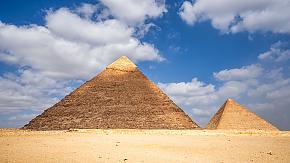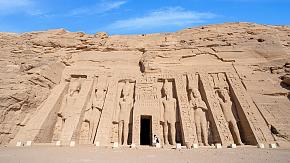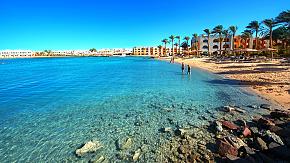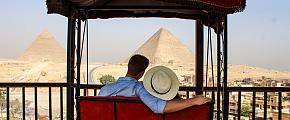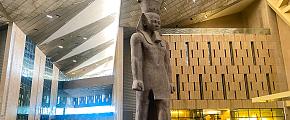A Complete Travel Guide of Alexandria
Alexandria is the most open city in Egypt, where 30% of foreigners live for a long time. The Western economy and culture have a significant influence on it, which is obviously different from Cairo and other areas. Compared with Cairo, the urban landscape is more modern and westernized. The food, sanitation, and residents' mental outlook are much better than those in other areas. Coupled with the special environment of the Mediterranean, it has the reputation of "Mediterranean Bride" and "Egyptian Bride."
Alexandria has been built for more than 2,000 years, and dozens of cities in West Asia, East Asia, and North Africa are named after Alexandria. However, Alexandria is a must-see destination for Egypt tours because it is not only a beautiful coastal city but also an ancient art city with a long history. Located in the west of the Nile estuary in Alexandria, it is more than 200 kilometers away from the capital Cairo. In addition, it's the largest seaport and the second-largest city in Egypt. Moreover, Alexandria is a summer resort along the Mediterranean coast. Different from other areas, Alexandria is cool and humid in winter and is blown by the fresh Mediterranean sea breeze in summer. So the weather in Alexandria is like spring all year round.
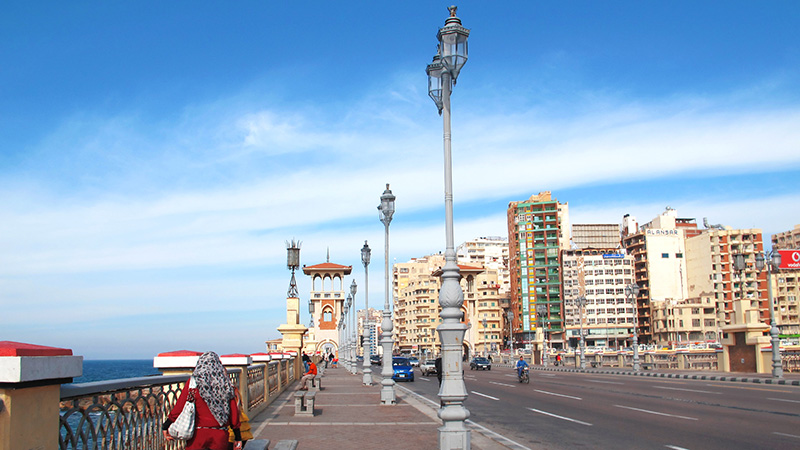 Alexandria City
Alexandria City
Top Tourist Attractions in Alexandria
Bibliotheca Alexandrian
Bibliotheca Alexandria is one of the oldest libraries in the world. The library has a collection of manuscripts from 400 BC to 300 BC. It has the richest collection of ancient books and was once as famous as the Lighthouse of Alexandria. Unfortunately, this world-famous ancient cultural center was completely engulfed by war at the end of the 3rd century. Today's Bibliotheca Alexandria was built in 2002, and it is located on the seashore avenue of Alexandria, an Egyptian port city on the south bank of the Mediterranean Sea. It is not only a library, but also a museum, art gallery and comprehensive scientific research institution. It is known as "the cultural center of Egypt" and "the beacon of thought, culture and science".
Bibliotheca Alexandria has a very rich collection of books and the interior has a very distinctive design. The main building is a cylinder topped by a semi-circular dome, and the conference hall is pyramidal in shape. They resemble a slanting sun, symbolizing the light of civilization that shines in the world. On the outer granite-textured cultural wall, the 50 oldest languages of the world are engraved with words, highlighting the conception and creativity of the cultural atmosphere.
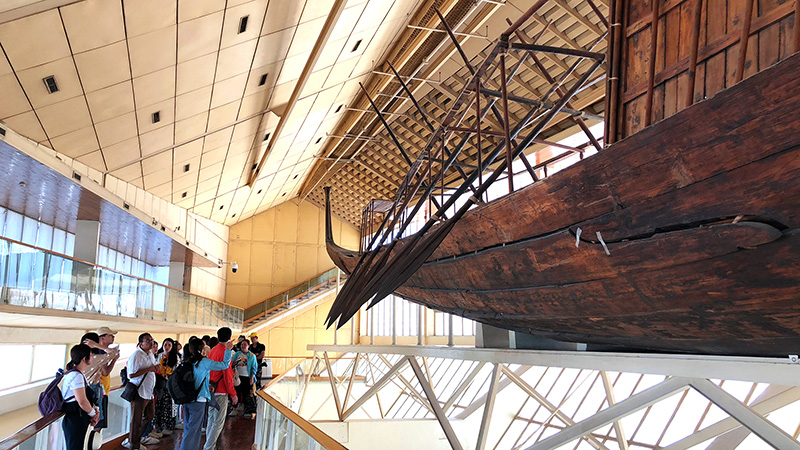 Bibliotheca Alexandrian
Bibliotheca Alexandrian
Fort Qaitbey
The predecessor of Fort Qaitbey is the Lighthouse of Alexandria, one of the seven wonders of ancient times. The lighthouse of Alexandria was built during the Ptolemaic Dynasty and was damaged by two major earthquakes in the 14th century. In 1480 AD, in order to prevent the invasion of Turkey, the King of Egypt ordered that a castle be built on the original site of the lighthouse with the stones of the lighthouse site, and named after himself. This is the existing complete Fort Qaitbey. The castle is a rectangular Arabic building, covering an area of 20,000 square meters, with tall walls on three sides. It is known as the two medieval ancient castles in Egypt together with the ancient castles in Cairo.
Fort Qaitbey is a perfect place to laze around, blowing the sea breeze and eating ice cream next to the azure Mediterranean Sea. With the boats swirling along the sea, Fort Qaitbey becomes glittering in the sunset light. Here you can see flocks of seagulls, people fishing on the beach, enthusiastic local children who are swimming...
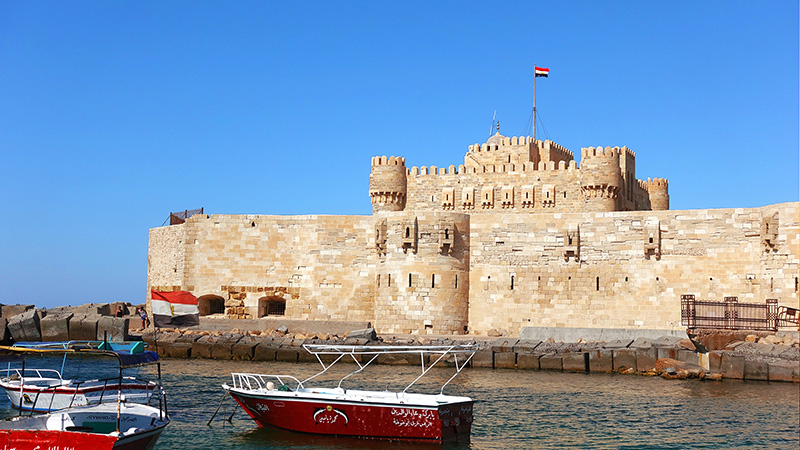 Fort Qaitbey
Fort Qaitbey
Pompey's Pillar
Pompey's Pillar, also known as the Knight's Pillar, is a pink granite pillar with a flower-shaped stigma. The pillar was originally a part of a Temple. But the temple was destroyed only after it existed for a short time, and only the stone pillars survived, becoming navigation marks for sailors. The huge stone pillars have stood for 1600 years. For more than 1,000 years, many places of interest in Alexandria have either fallen into ruins or disappeared. Only Pompey's Pillar stands still, and now they have become the symbol of Alexandria.
Pompey's Pillar is one of the landmarks of Alexandria. From a short distance away, you can see Pompey's Pillar standing on the hillside, and in front of it, you can also see two sphinxes guarding the last glory. You can not only take pictures with it up close but also touch it and feel the history and civilization passing through your fingers.
Kom Ad Dikah
Kom Ad Dikah, located in the center of Alexandria, is the only Roman theater found in Egypt so far. It was built in the 2nd century AD when the Roman Empire ruled Egypt. It was discovered in 1960 when the office building of the Alexandria provincial government was built to dig the foundation. The theater is horseshoe-shaped, with the original dome roof. The exterior wall is the original of Roman times, and the interior wall was destroyed by the earthquake. Both walls are made of stones and red bricks.
To this day, the theater's echo effect is still first-class. Standing in the middle of the theater to talk and clap, the sound can be clearly transmitted to any corner of the back row.
Catacombs of Kom ash-Shuqqafa
The catacombs of Kom ash-Shuqqafa were discovered in 1900. This underground tomb was originally a noble cemetery built by a Roman Egyptian in the 2nd century and gradually became a cemetery in the middle of the 3rd century. The tomb is characterized by the fusion of different religious cultures. Here, we can clearly feel the unique charm of Alexander's style formed by the integration of ancient Egyptian culture and art with Greek and Roman civilizations. The whole tomb is divided into three floors, 35 meters deep, with spiral stairs for going up and down and a vertical shaft in the middle (The ground floor is flooded and inaccessible).
Visiting the catacombs of Kom ash-Shuqqafa may require some adventurous spirit. Because its entire tour is basically underground, the lighting is dim, and some of the deeper areas have a bit of a horror undertone. But you won't regret going inside. The neatly arranged compartments for coffins, the beautiful stone carvings, and the statues preserved on the walls will definitely make your visit worthwhile.
Montaza Palace
Montaza Palace, also known as the "Egyptian Summer Palace," is located in a vast scenic area at the eastern end of Alexandria. Since its construction, Montaza Palace has been a place where the royal family has taken refuge from the summer heat, hence the name Summer Palace. It is surrounded by gardens with excellent views and beautiful surroundings. The palace is luxuriously furnished, and many of the rooms and bedrooms have been preserved in their original state as they were 90 years ago.
Montaza Palace is the largest park in Alexandria, where you can see a Florentine building surrounded by dense woods and exotic flowers. You can breathe fresh air and get up close to feel the charm of nature. The buildings in the park are distinctive in their own way. The main buildings, Al Haramelk and Al Salamelk, have been converted into hotels with a view of Al Montazah Bay. You can enjoy the night view here at dusk, and it is also a good place to take photos.
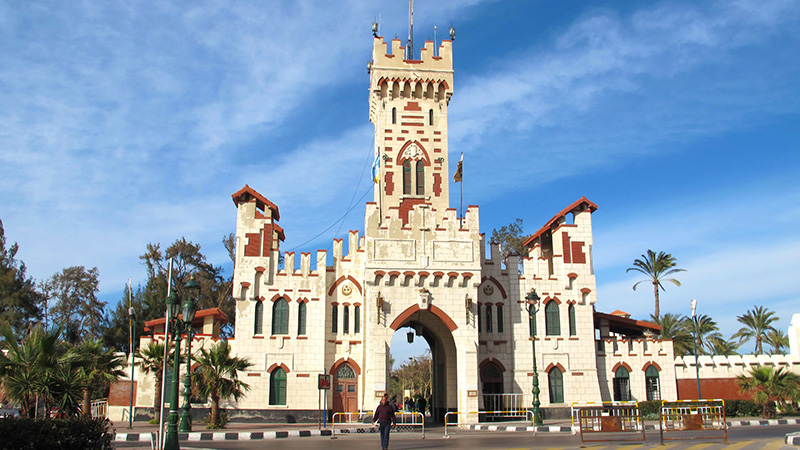 Montaza Palace
Montaza Palace
El Alamein War Memorials
El Alamein War Memorial is located in the town of Alamein, more than 100 kilometers west of Alexandria. It was established to commemorate the Battle of El Alamein, the famous battle of North Africa in World War II. Unlike most museums in Egypt, this is not a display of ancient Egyptian artifacts but of aircraft, cannons, weapons, etc. Memorials was built in 1956 and is divided into an outdoor exhibition area, an indoor permanent exhibition area, and an indoor temporary exhibition area. The outdoor exhibition area displays medium-sized equipment used by the Allies and Axis powers at the time, including artillery, tanks, fighter planes, and armored vehicles. The indoor exhibition area is further divided into the Egyptian exhibition hall, the British exhibition hall, the German exhibition hall, and the Italian exhibition hall, which display guns, ammunition, short weapons, and some models of soldiers used by soldiers from various countries participating in the war.
The Battle of El Alamein was the turning point in the North African theater of World War II, fought on October 23, 1942, and lasted through November. By visiting the El Alamein War Memorial, you can not only learn more about the tragic battle of that year but also feel the determination of countries to maintain world peace.
Best Time to Visit
Alexandria is located on the south bank of the Mediterranean Sea and has a subtropical Mediterranean climate. Its summer is sunny and hot, winter is mild and rainy, and it is one of the most famous leisure resorts in Egypt. July- September is the best time to visit Alexandria. In summer, the heat in Upper Egypt is daunting, and Egyptians flock to the Nile Delta and the Sinai Peninsula in the north. Therefore, Alexandria is known as the Summer Capital of Egypt.
What to Wear in Alexandria
It's hot in summer, so sunhats and sunscreen are necessary. Because the sun is very strong at noon, it may damage your eyes if you don't wear sunglasses. At the end of autumn, the climate will be relatively mild, but the temperature difference between morning and evening will increase. And there will be occasional rainfall, so bring some autumn clothes along with summer clothes. In addition, Egypt is an Arab country, and most of its citizens believe in Islam. Even though Alexandria is one of the most open areas in Egypt, tourists should pay attention to not exposing their clothes too much, and girls should not wear camisoles and short skirts above the knee.
Alexandria was once the political, economic, cultural, and trade center of the Mediterranean coast, with many places of interest. On the seashore avenue between the East Port of Alexandria and Caesar Palace, the street scenes with European architectural style are exciting. The towering minarets and spherical roofs of mosques among buildings along the way are also full of flavor. If you are interested, please contact us. Simply tell us what you want to see, and our personalized Egypt specialists will provide you with a tailor-made itinerary within 24 hours.
What Our Clients Say
Explore the latest verified reviews of Odynovo's travel services on Tripadvisor, Google, Trustpilot, Product Review and more trusted platforms.


